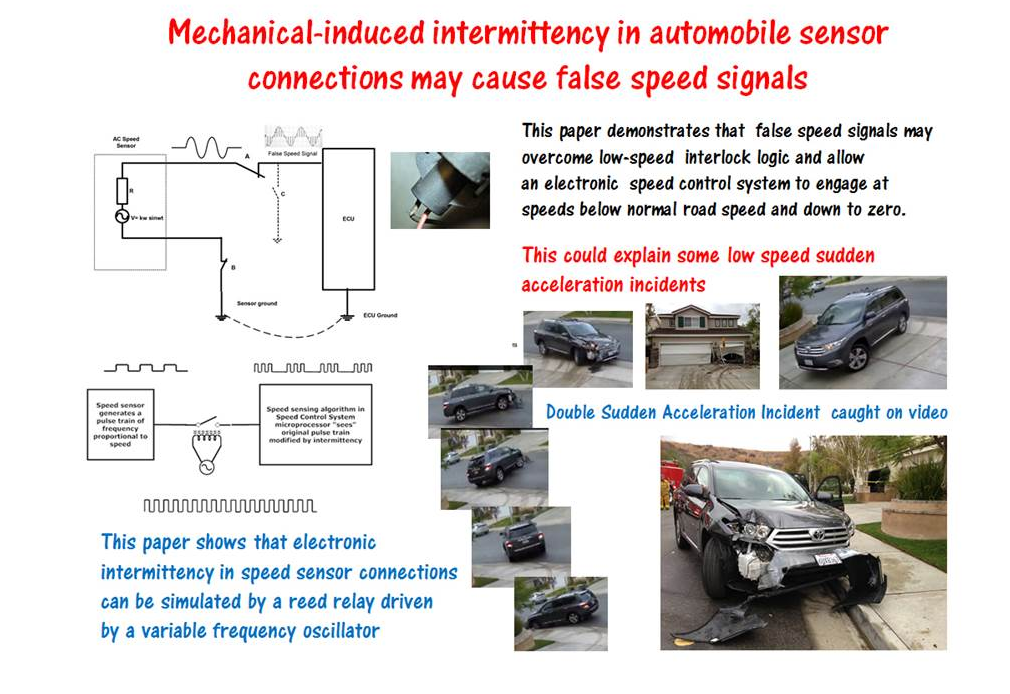INTERMITTENT ELECTRICAL CONTACT RESISTANCE AS A CONTRIBUTORY FACTOR IN THE LOSS OF AUTOMOBILE SPEED CONTROL SYSTEM FUNCTIONAL INTEGRITY
Summary: For three decades, sudden acceleration (SA) incidents have been reported, where automobiles accelerate without warning. These incidents are often diagnosed as No Fault Found (NFF). Investigators who follow the line of diagnostic reasoning from the 1989 NHTSA SA report tend to conclude that SAs are caused by driver pedal error. This paper reviews the diagnostic process in the NHTSA report and finds (1) that it assumes that an intermittent electronic malfunction should be reproducible either through in-vehicle or laboratory bench tests without saying why and (2) that the consequence of this assumption, for which there appears to be no forensic precedent, is to re-categorize possible intermittent electronic failures as proven to be non-electronic. Showing that the supposedly inescapable conclusions of the NHTSA report concerning electronic malfunctions are without foundation opens the way for the paper to discuss electronic intermittency as a potential factor in SA incidents. It then reports a simple practical experiment that shows how mechanically-induced electrical contact intermittencies can generate false speed signals that an automobile speed control system may accept as true and that do not trigger any diagnostic fault codes. Since the generation of accurate speed signals is essential for the proper functioning of a number of other automobile safety-critical control systems, the apparent ease with which false speed signals can be generated by vibration of a poor electrical contact is obviously a matter of general concern. Various ways of reducing the likelihood of SAs are discussed, including electrical contact improvements to reduce the likelihood of generating false speed signals, improved battery maintenance, and the incorporation of an independent fail-safe that reduces engine power in an emergency, such as a kill switch.
